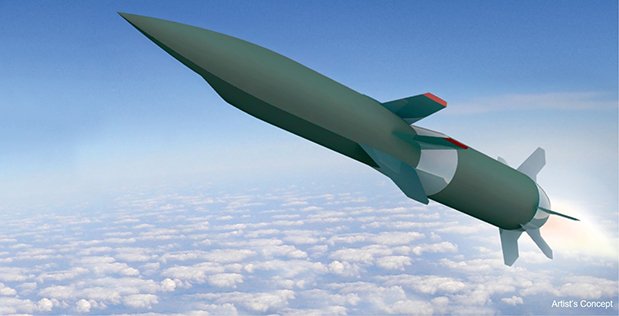The Air Force Research Labs (AFRL) and the Defense Advanced Research Projects Agency (DARPA) recently announced a successful test of their new hypersonic missile program.
Dubbed the Hypersonic Airbreathing Weapon Concept (HAWC), a program detailed by The Debrief back in September, the Lockheed Martin-developed missile reportedly passed this latest test with flying colors.
According to DARPA, the hypersonic missile “flew at speeds greater than Mach 5, higher than 60,000 feet, and farther than 300 nautical miles.” DARPA later confirmed that the bulk of the flight occurred above MACH 5, or five times the speed of sound, which is the minimum threshold for an aerial platform to be deemed hypersonic. The statement from the agency also noted that “this latest flight demonstrated improved capabilities and performance.”
DARPA’s HAWC program is a wrap…concluding with a successful @LockheedMartin #hypersonic missile flying more than 300 nautical miles and lots of data for the @usairforce. More: https://t.co/Yqq2Xl50jn pic.twitter.com/ilNN4xz0z4
— DARPA (@DARPA) January 30, 2023
The successful test of the HAWC system is something of a bonus for the AFRL and DARPA since they have actually decided not to go forward with this particular missile program. Instead, the forces behind the successful test are putting all of the future efforts into a pair of other missile systems. They are the Lockheed martin developed AGM-183 Air-Launched Rapid Response Weapon (ARRW) and Raytheon’s Hypersonic Attack Cruise Missile (HACM).
Still, the team behind the latest tests says they decided to go ahead and finish the HAWC test anyway since the information gathered during the hypersonic flight will provide invaluable real-world test data that will inform the development of the two systems they are moving forward with.
“This month’s flight added an exclamation point to the most successful hypersonic airbreathing flight test program in US history,” said Walter Price, an Air Force deputy for the HAWC program. “The things we’ve learned from HAWC will certainly enhance future U.S. Air Force capabilities.”
Andrew “Tippy” Knoedler, the HAWC program manager, echoed this sentiment, noting the significant knowledge and expertise that has come out of the HAWC program.
“The HAWC program created a generation of new hypersonic engineers and scientists,” said Knoedler. “HAWC also brought a wealth of data and progress to the airbreathing hypersonic community. The industry teams attacked the challenge of scramjet-powered vehicles in earnest, and we had the grit and luck to make it work.”
Hypersonic missiles have gained a lot of attention recently, mostly due to the advances in hypersonic technology made by China and Russia. Recent reports indicate that Russia has employed hypersonic missiles in its war against Ukraine, with devastating effects.
Unlike conventional missiles, hypersonic platforms are particularly devastating due to the fact that they travel so incredibly fast. This unique ability makes them difficult to spot on current radar systems and even more difficult to intercept and potentially shoot down.
The key to HAWC and other hypersonic platforms in development is the scramjet engine. Short for supersonic combustible ramjet, the air-breathing tech relies on a unique aspect of high-speed physics that turns the air “rammed” into the front of the missile into a powerful propulsive plume out the back of the engine. Think of how a nozzle on a garden hose can take a somewhat tepid stream and turn it into a high-power water jet, and you get the idea.
Moving forward with its hypersonic efforts, DARPA said it “plans to continue that maturation in the More Opportunities with HAWC (MOHAWC) program by building and flying more vehicles that build upon HAWC’s advances.” So, although the program has been retired, the critical progress the HAWC team made will live on.
Christopher Plain is a novelist, comedian, and Head Science Writer at The Debrief. Follow and connect with him on Twitter, learn about his books at plainfiction.com, or email him directly at christopher@thedebrief.org.

